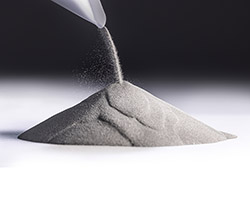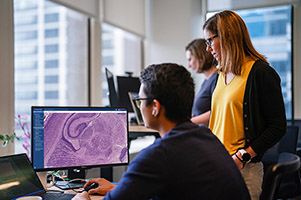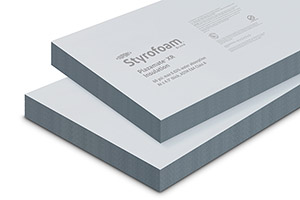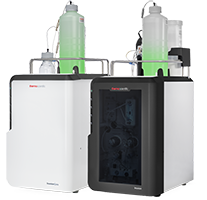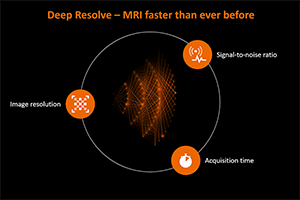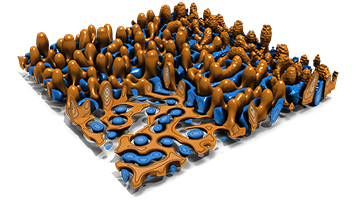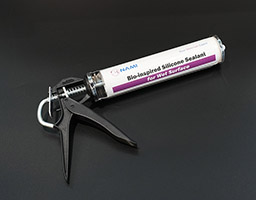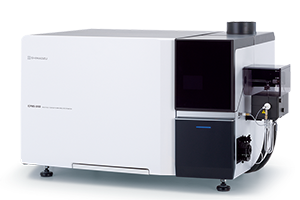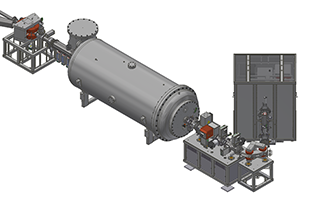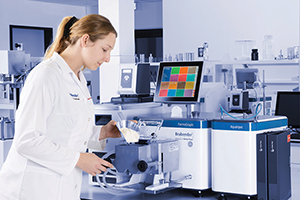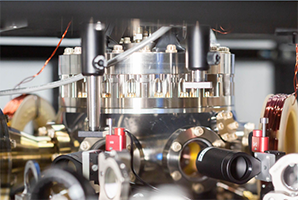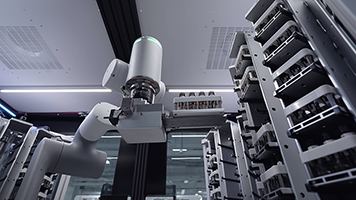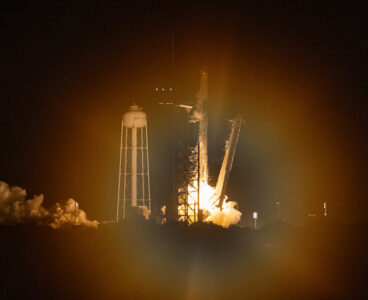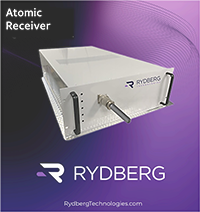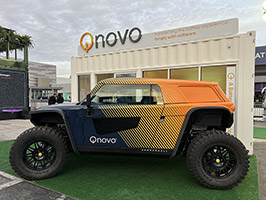University of Utah Co-Developer: IperionX Steel was too expensive compared to iron for 3,000 years until Henry Bessemer created a new process in 1856 that reduced the production costs. Steel holds the position of being the most significant metal in today’s world. Although titanium is superior to steel and aluminum, its high cost limits its…
Pramana joins Proscia to help laboratories realize more value from their pathology data
Proscia, a provider of digital and computational pathology solutions, announces that , an AI-enabled health tech company modernizing the pathology sector, is now a Proscia Ready partner. Pramana joins the partner alliance to help life sciences organizations and diagnostic laboratories leverage enriched, high-quality data, including DICOM images, in their routine research and clinical operations. Proscia Ready…
Shimadzu introduces powerful systems with the smallest footprints at Pittcon 2024
Several new Shimadzu instruments were introduced at the first day of Pittcon 2024 in San Diego and R&D World was there for it. Among the company’s latest laboratory offerings are the high-performance Brevis GC-2050 gas chromatograph system and the GCMS-QP2050 single quad gas chromatograph mass spectrometer. “The Brevis GC-2050 is our newest GC instrument and…
DuPont Styrofoam Plazamate XR Extruded Polystyrene Foam with 30% Higher Thermal Resistivity is the R&D 100 winner of the day
Developer: DuPont de Nemours Inc., Water and Protection, Performance Building Solutions Styrofoam Brand Plazamate XR has the highest thermal resistance (R) per inch of any extruded polystyrene (XPS) roofing insulation (6.7 R/in). This means 30% more thermal resistance in every inch of its thickness compared with typical XPS insulations. This reduces assembly thickness, and increases…
Joint Communication Architecture for Unmanned Systems (JCAUS) Security/Cyber Module End Cryptographic Unit is today’s R&D 100 of the day
MIT Lincoln Laboratory’s JCAUS SCM ECU transforms the development landscape for uncrewed systems that handle sensitive information. It opens the tradespace to small and emerging businesses, which are often sources of innovation. It is the first crypto device to provide highly secure communications for a wide range of uncrewed systems within the JCAUS architecture, which…
Thermo Fisher Scientific’s ion chromatography instrument improves lab adaptability
To support a wider range of ion chromatography analysis with one instrument, Thermo Fisher Scientific has launched the Thermo Scientific Dionex Inuvion Ion Chromatography (IC) system, helping to make ion analysis simpler and more intuitive for labs of all sizes. The new analytical instrument is designed to be easily reconfigurable, providing those who require the…
High Transfer Efficiency Commercial Vehicle Coating System is the R&D 100 winner of the day
Axalta Coating Systems’ new vehicle coating system is a major step forward for commercial vehicle manufacturers in meeting their sustainability and productivity targets. It also enhances the coated surface’s appearance and expands the color capability for the market. This technology meets several market megatrends in the commercial vehicle and heavy-duty truck market. It reduces solvent…
Deep Resolve – MRI Faster than ever before is the R&D 100 of the day
MRI scans face the challenge of balancing acquisition speed, image quality, and signal-to-noise ratio. Siemens Healthineers‘ Deep Resolve’s AI-powered reconstruction technology improves all three factors simultaneously, making scans faster and maintaining image quality. This technology generates actionable diagnostic insights that can save lives. With Deep Resolve, scan times can be shortened by up to 60%,…
Sparking innovation for research
From the University of Missouri For more than half a century, the University of Missouri has been a leader in nuclear science and engineering research thanks to the MU Researcher Reactor (MURR), the highest-powered research reactor at any university in the country. Building on MURR’s internationally recognized level of excellence, the university is looking into…
ZFP: Fast, Accurate Data Compression for Modern Supercomputing Applications is today’s R&D 100 of the day
Lawrence Livermore National Laboratory’s ZFP is a new compressed number format for floating-point and integer arrays intended to reduce in-memory and offline storage and transfer time of large data sets that arise in high-performance computing (HPC). ZFP effectively expands available CPU and GPU memory by as much as 10 times; reduces offline storage by one…
Bio-inspired Silicone Sealant for Wet Surface Adhesion is the R&D 100 winner of the day
Inspired by mussels adhering to wet rocks, Nano and Advanced Materials Institute (NAMI) has invented a catechol-grafted silicone sealant with excellent bonds on hard-to-attach surfaces. The unique catechol groups in the silicone sealant system designed by NAMI can repel water molecules and form strong chemical covalent and physical electrostatic bonds on wet surfaces. In particular,…
Slow economic growth forecast in 2024, in this week’s R&D Power Index
The R&D World Index (RDWI) for the week ending January 26, 2024, closed at 3,348.96 for the 25 companies in the RDWI. The Index was up 1.56% (or 51.40 basis points). Fifteen RDWI members gained value last week from 0.40% (Honda) to 9.30% (IBM). Ten RDWI members lost value the previous week from -0.22% (AbbVie)…
Incheon National University researchers enhance the safety of lithium batteries
From Incheon National University: Lithium-ion batteries face safety concerns due to internal separator issues that often lead to short circuits. Scientists have now developed a method to improve the stability and properties of separators with a layer of silicon dioxide and other functional molecules. Batteries employing these separators demonstrated improved performance and reduced growth of…
Hemco’s AirFlow Monitor continuously monitors face velocity
The Hemco AirFlow Monitor is a device that continuously monitors the face velocity airflow of a fume hood. It allows you to select and calibrate the desired FPM velocity set point. In case the hood face velocity falls below the set point, an audible alarm and a visual red indicator light will appear, alerting you…
Shimadzu’s new mass spectrometer series provides eco-friendly elemental analysis
Shimadzu Scientific Instruments introduces the ICPMS-2040/2050 series of inductively coupled plasma mass spectrometers that feature a proprietary advanced mini-torch system, a redesigned collision/reaction cell, and a high-performance quadrupole mass filter with enhanced resolution. The ICPMS-2040/2050 series is ideal for analyzing the concentration of inorganic elements in solution samples in environmental, pharmaceutical, clinical, food, chemical, and…
The National Science Foundation funds Bruker NMR installation at The Ohio State University
Bruker Corporation, a provider of nuclear magnetic resonance (NMR) spectroscopy solutions for life and materials research, announces the successful installation of a 1.2 GHz NMR system at the National Gateway Ultrahigh Field NMR Center at The Ohio State University. Ultra-high field NMR is complementary to other structural biology technologies in that NMR can measure functional…
New NPL neutron facility boosts UK’s nuclear energy, defense, and fusion research capabilities
The National Physical Laboratory (NPL) has announced a new neutron measurement facility that will play a critical role in the safe and secure operation and continued development of the U.K.’s nuclear energy, defense, and fusion research sectors. The facility consists of a new particle accelerator and is one of only a few known facilities worldwide…
Brabender becomes part of Anton Paar, maker of laboratory instruments
Anton Paar, a maker of laboratory and process measurement technology, announces a new chapter in the company’s journey. At the beginning of 2024, Anton Paar took over the global sales and service network of Brabender, a company it acquired in August 2023. Anton Paar’s 37 global sales and service centers adds value for customers. These…
Quantinuum provides RIKEN large-scale hybrid quantum–supercomputing platform
Quantinuum, the world’s largest integrated quantum computing company, and RIKEN, Japan’s largest comprehensive research institution and home to high-performance computing (HPC) center, have announced an agreement in which Quantinuum will provide RIKEN access to its highest-performing H1-Series ion-trap quantum computing technology. Under the agreement, Quantinuum will install the hardware at RIKEN’s campus in Wako, Saitama. The deployment…
Shimadzu’s new next-generation GCMS provides sensitivity, stability, and speed
Shimadzu Scientific Instruments introduces its next-generation gas chromatograph mass spectrometer — the GCMS-QP2050. Powered by advanced automated technology in a compact footprint, the GCMS-QP2050 features exceptional reliability, sensitivity, stability, and speed in an easy-to-use system. It can be partnered with Shimadzu’s high-end Nexis GC-2030 or compact Brevis GC-2050 to meet customers’ performance and space requirements.…
Gravity-free brassiere using bio-inspired shock-absorbing materials is the R&D 100 winner of the day
Developer: Nano and Advanced Materials Institute ( Co-Developer: Super Rich Moulders Limited Four K Knitters Limited NAMI has developed an innovative material that emulates spider silk, offering both flexibility for comfort and resistance to movement. The material features soft and hard segments, with the soft part providing elasticity and the hard portion delivering energy-absorbing capabilities.…
ABB Robotics joins XtalPi to build intelligent automated laboratories
ABB Robotics and XtalPi have entered a strategic partnership to produce a range of automated laboratory workstations in China. The new, automated laboratories will boost the productivity of R&D processes in biopharmaceuticals, chemical engineering and chemistry, and new energy materials. “Our collaboration with XtalPi marks another milestone for ABB’s collaborative robots in the life sciences…
SpaceX returns vital life science research sponsored by the ISS National Lab
Dozens of science and technology development payloads returned to Earth from the International Space Station (ISS) on December 22 as SpaceX’s 29th Commercial Resupply Services (CRS) mission, contracted by NASA, successfully concluded. More than 30 payloads sponsored by the ISS National Laboratory returned on this mission, many of which were life science investigations aimed at…
Rydberg Technologies demonstrates first long-range atomic RF communication with quantum sensor at US Army event
Rydberg Technologies Inc., a maker of Rydberg quantum technologies and a pioneer in radio frequency (RF) quantum sensing, has announced its low-size weight and power (SWaP) atomic receiver and the successful demonstration of the world’s first long-range radio communications with an atomic quantum sensor at the recent U.S. Army Combat Capabilities Development Command (DEVCOM) C5ISR…
Qnovo’s SpectralX: Intelligent lithium-ion battery management software, R&D 100 winner of the day
Qnovo Inc.’s SpectralX makes it possible to deploy electric vehicles quickly and safely for both passenger and commercial use in developed and developing markets. Once deployed, cars, trucks, and buses can be driven for longer distances and kept on the road for more extended periods of time thanks to fast-charging and extended-life batteries. Also, by…

